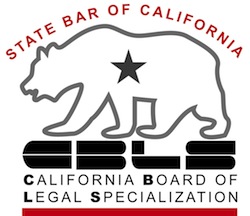Every campaign needs a logo.
Make the logo of your retirement planning a turtle, rampant.
Rampant, you say? Turtle?
In the Middle Ages, knights put their ID’s on their shields in elaborate heraldry that told bystanders who he was, what his birth order was, and which side of the blanket he was born on.
Heraldry featured animals, real and mythic, on coats of arms. While they were sometimes lying down (couchant), striding (passant), or sitting (sejant), most four legged animals were shown rearing (rampant).
While not very heroic, consider the power of the rearing turtle, or slow and steady, in your modern day battle for financial security.
Tortoise and the hare
The fable about the tortoise and the hare stands for the success of slow and steady in the big picture.
Though no one in the collection world talks about it in those terms, our California law for retirement accounts works the same way.
- The law will protect money set aside in the proper vehicle in relatively small amounts over long periods of time.
- The debtor will lose big sums of money stashed even for good purposes on the eve of a financial disaster.
Hares, California consumers who find they want to stash and preserve assets at the last minute before bankruptcy or a collection suit, find themselves losers at the end of the day.
Exemptions
California exemption law protects IRA accounts to the extent they are necessary for the support of the judgment debtor and his dependents at retirement. CCP 704.115. The exemption is limited however to the amount that federal tax law allows to be contributed each year and preserve the tax free status of the account.
So, $75,000 in your IRA is absolutely safe from creditors if you accumulated it by putting aside $5,000 a year; it’s fair game for debt collectors if you instead made a lump sum contribution (not a roll over).
Federal law does the same thing in its treatment of college savings accounts in bankruptcy. Bankruptcy trustees and creditors can’t reach funds set aside in a education IRA more than two years before the bankruptcy filing. §541(b)(5).
Saving on your own
Lots of us aren’t joiners. We’re the stand alone, do it yourself kind of guy.
I often see people who have an investment account they’ve labeled for retirement, or a savings account for their children’s college.
Only trouble with that approach when you run into debt problems is that California law doesn’t recognize the sanctity of money you’ve informally earmarked for a good purpose. If it’s not in an account, recognized by a federal law, and used only for the favored purpose, your creditors will be able to reach it.
Off to a slow start
The turtle-driven public policy presents problems for those who come to the need to save late in life.
There don’t seem to be good vehicles for the kind of hefty catch up savings that is required. My best suggestion for the self employed who find themselves with some funds and no retirement is to consider incorporating and establishing a corporate retirement plan.
While we don’t like to think about being saddled with bills we can’t pay, we don’t seem to have trouble with thinking about the risk of our home catching fire. We buy insurance against fire loss.
Even if you never have to consider bankruptcy or fight to protect your retirement from creditors, you will not lose if you emulate the tortoise and put money away in an IRA or the like, slow and steady.
More about California protection of retirement income.
Everyone gets a $1M IRA exemption in bankruptcy
Image courtesy of Theresa L. Wysocki.






